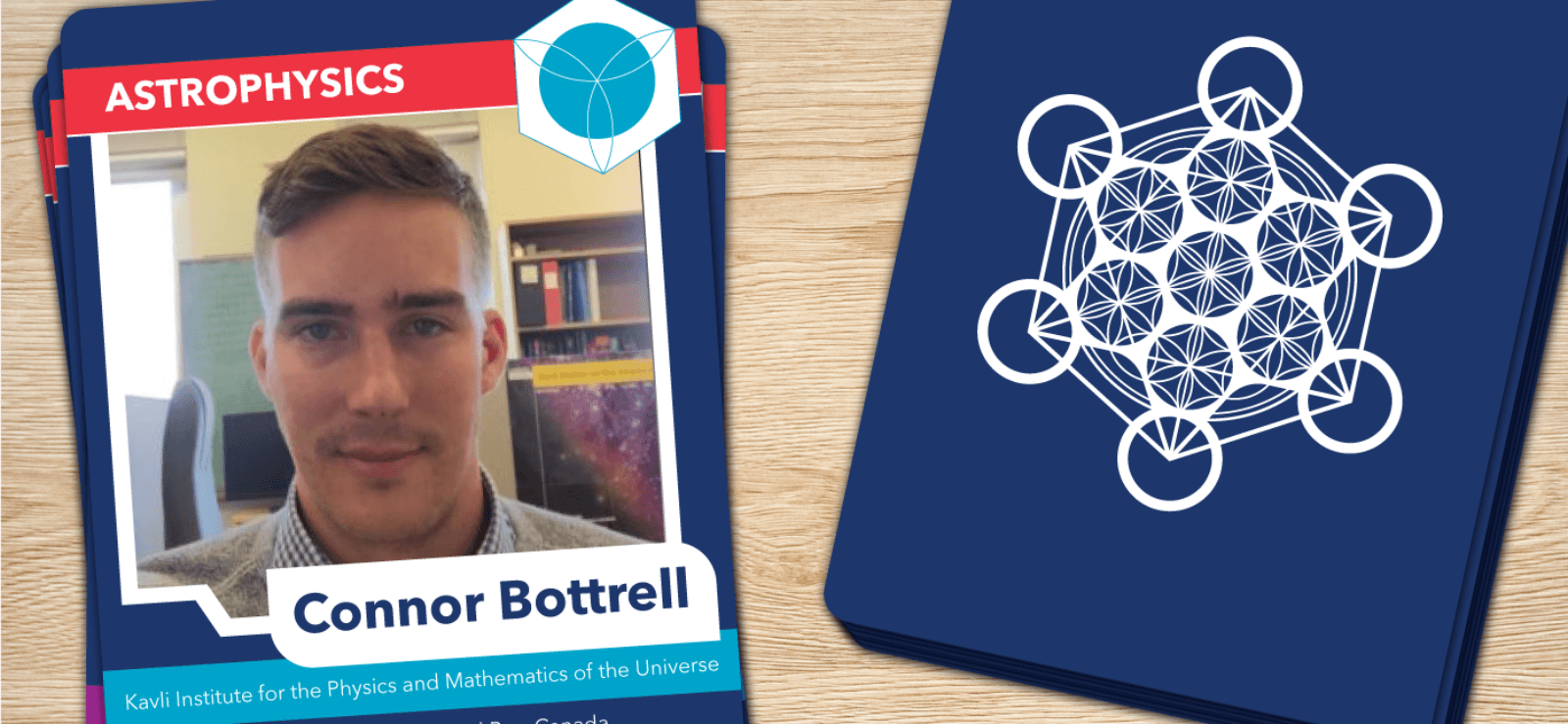Galaxy Collisions
Q&A with Connor Bottrell, postdoctoral researcher at the Kavli Institute for the Physics and Mathematics of the Universe

QUICK FACTS
Hometown: Brentwood Bay, British Columbia, Canada
Favorite movie and book: Lord of the Rings
Six-Word Memoir: Beauty is found everywhere; seek it!
Most unusual job: Cleaning chainsaws, wood-chippers, trucks and other equipment for my dad’s tree care company.
Hobbies: Too many. Rugby and waterpolo; hiking, canoeing, and camping; barbecue and smoked meats; DIY woodwork; gardening; scuba and snorkelling; painting.

How did you first become interested in science? Who or what inspired you?
My parents showed me how to appreciate the natural world well before I could walk and I continue to learn from them today. I was also fortunate to have many exceptional teachers throughout my elementary to post-secondary student life who were passionate about science and nature. My Grade 7 math, science, and history teacher stands out as a defining source of inspiration to pursue a career in science. His introductions to concepts like the Big Bang, the Universe, and galaxies profoundly affected me. Later, my high-school physics teachers would arm me with the tools to find order in seemingly complex or chaotic systems using mathematics. The satisfaction of accurately predicting an outcome from a set of inputs or initial conditions is something that will always keep me going. I would find continued inspiration in my undergraduate and graduate astronomy and astrophysics instructors and mentors.
What is the question that most drives your work right now?
I am primarily interested in role the role of galaxy collisions and subsequent mergers in transforming galaxies throughout cosmic history. Our galaxy, the Milky Way, is due to merge with another nearby galaxy, Andromeda (M31), in ~4.5 billion years. What happens in such an interaction? How are interactions such as this responsible for the assembly of stellar material in galaxies? What physical phenomena are triggered or halted by mergers? And what is the relative contribution of mergers in driving these changes?
The timescale involved does not make this an easy question to answer from the perspective of an observer whose lifespan is ~100 years. So there are two ways that these questions can be tackled: (1) by identifying and studying other, more distant galaxy mergers; and (2) using computer simulations in which we demand that particles representing stars and gas obey the same physical laws that we infer from nature (i.e. gravity, fluid mechanics, thermodynamics, etc.). I strive to exploit the advantages of both of these methods in tandem with machine learning and pattern recognition models in my research.
How would you explain your research to a kindergartener?
I watch what happens when really big things smash together — things the size of the Milky Way with lots of stars. I’d like know how many stars in the sky are there because of events like that. But I am lazy, so I teach computers to do it for me.
What are you most excited about or inspired by in science right now?
The first direct image of the supermassive black hole in M87 and the detection of gravitational waves from black hole and neutron star binaries are two outstanding discoveries from the last few years that are inspiring for me. Fast radio bursts are also very curious and exciting phenomena and their origin is not understood. The recent landing of the Mars Perserverence Rover in February this year was also a thriller.
What is a common misconception about your research or your field?
That "all galaxies are flattened disks like the Milky Way." This misconception is easily dispelled by showing an image of the giant elliptical galaxy M87 (and its supermassive black hole, of course), followed by the Hubble Sequence. This diversity in galaxy shapes and sizes is one of the central challenges of building a complete framework for how galaxies form and evolve. In particular, the transition from disk-like to elliptical (and potentially back again to some degree) has strong theoretical and observational links to galaxy interactions and mergers.
If you could go back in time to the start of your career, what advice would you give yourself?
I would tell an early version of myself to spend less time worrying about the future and comparing myself with my peers. I am a competitive person by nature, and that can be a good thing because it makes you strive for excellence. But as an early-career academic, you can easily fall into the trap of looking at what other people do as a metric for what you need to do (e.g. They got this job? How many publications do they have? How many more do I need to write?). It is certainly a reality that publications are important. But there is greater importance in doing work that you are proud of and that you know is excellent — even if it doesn’t get 1000 citations or you don’t publish 11 papers a year.
What scientist, dead or alive, would you most like to have lunch with and why?
I would have liked to have had lunch with Vera Rubin. She demonstrated an exceptional commitment to seeking the truth and this resulted in some of the most outstanding and inspiring contributions to our understanding of the Universe. My pursuit of a career in astronomy was greatly influenced by her research. Vera Rubin was also notable for her approach to teaching — making science appear desirable and fun. I would have liked to have questioned her about her approach to teaching and to have known what her favourite beer was.